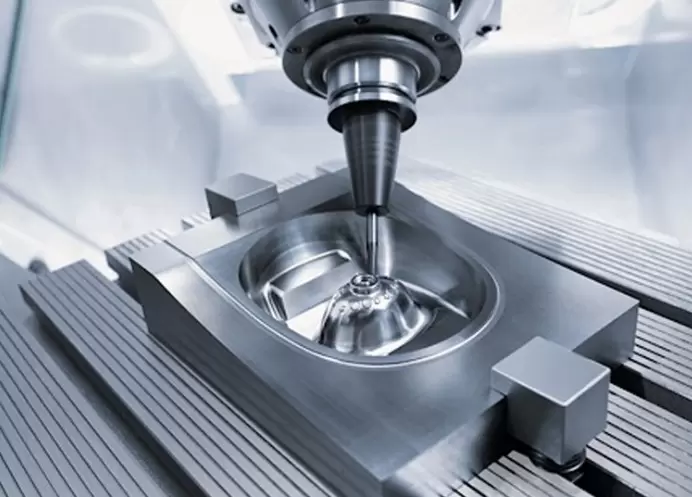In this article, we will explore the benefits of rapid prototyping and rapid tooling for product development. You will learn how these technologies have revolutionized the manufacturing industry by allowing for the quick creation of prototypes and production tools. We will discuss different prototyping and tooling methods, the materials used, and how these technologies improve product development efficiency.
Table of Contents:
I. Introduction
- Definition of Rapid Prototyping and Rapid Tooling
- Overview of Rapid Prototyping and Rapid Tooling
II. Techniques and Materials Used in Rapid Prototyping
- Stereolithography (SLA)
- Digital Light Processing (DLP)
- Fused Deposition Modeling (FDM)
- Selective Laser Sintering (SLS)
- Laser Engineered Net Shaping (LENS)
- Materials Used for Rapid Prototyping
III. Techniques and Materials Used in Rapid Tooling
- Soft Tooling
- Hard Tooling
- Direct Metal Laser Sintering (DMLS)
- Injection Molding
- Materials Used for Rapid Tooling
IV. Benefits of Rapid Prototyping and Rapid Tooling
- Cost Reduction
- Fast Production
- Higher Quality Results
V. Applications of Rapid Prototyping and Rapid Tooling
- Conceptual Design
- Product Development
- Product Testing
VI. Limitations of Rapid Prototyping and Rapid Tooling
- Surface Finish
- Size Limitations
VII. Choosing the Right Technology for Your Product Development Needs
- Factors to Consider
- Advantages of Professional Assistance
VIII. Conclusion
- The Future of Rapid Prototyping and Rapid Tooling
I. Introduction
Rapid prototyping and rapid tooling are technologies that have revolutionized the manufacturing industry. These technologies allow product developers to quickly produce prototypes and production tools. In this article, we will explore the techniques and materials used in both rapid prototyping and rapid tooling, their benefits, and applications.
II. Techniques and Materials Used in Rapid Prototyping
There are several techniques used in rapid prototyping, including Stereolithography (SLA), Digital Light Processing (DLP), Fused Deposition Modeling (FDM), Selective Laser Sintering (SLS), and Laser Engineered Net Shaping (LENS). These techniques use different materials, such as polymers, metals, and ceramics, to create 3D models from design files.
III. Techniques and Materials Used in Rapid Tooling
Rapid tooling is the fast production of production-grade tools. Soft tooling and hard tooling are the two primary methods used in rapid tooling. Soft tooling uses silicone molds while hard tooling uses metal molds. Direct Metal Laser Sintering (DMLS) and Injection Molding are two popular rapid tooling technologies. They use metal, wax, and plastic materials to produce high-quality and durable production tools.
IV. Benefits of Rapid Prototyping and Rapid Tooling
The benefits of rapid prototyping and tooling include cost reduction, fast production timeline and higher quality results. The reduced lead time and lower costs help companies save time and money, allowing for quicker product development and go-to-market times.
V. Applications of Rapid Prototyping and Rapid Tooling
Rapid prototyping and tooling have several applications across industries. The product development stage utilizes both technologies to create a better understanding of the project’s feasibility before proceeding to the next stage of product testing. Companies also use rapid prototyping in conceptual design, motorsport applications, architecture, and medical applications.
VI. Limitations of Rapid Prototyping and Rapid Tooling
The limitations of rapid prototyping and tooling include surface finish limitations, where parts may not have smooth surfaces, and size limitations where larger parts may not be produced on one print.
VII. Choosing the Right Technology for Your Product Development Needs
When choosing the right technology for your product development needs, factors to consider include material requirements, tolerance, accuracy, features, and even cost considerations. Working with an expert in rapid prototyping and tooling can help businesses identify the right technology for their needs and get the most benefits.
VIII. Conclusion
In conclusion, rapid prototyping and rapid tooling technologies have revolutionized product development and improved efficiency across industries. Their benefits include cost and time efficiency, higher quality results, and an array of potential applications in different industries. As this technology continues to evolve, it is likely that rapid prototyping and rapid tooling will play an increasingly important role in product development and manufacturing.
Rapid Tooling vs. Rapid Prototyping:
Rapid Tooling and Rapid Prototyping are both techniques used in product development, but they serve different purposes and stages of the manufacturing process.
- Rapid Prototyping:
Rapid prototyping is a technique used in the early stages of product development to quickly create physical prototypes of a design. The main goal of rapid prototyping is to evaluate and validate the design concept before moving forward with full-scale production. By producing a tangible model, designers and engineers can assess the product's form, fit, and functionality, identify potential design flaws, and gather feedback for improvement.
Rapid prototyping employs various additive manufacturing technologies, such as 3D printing, Stereolithography (SLA), Selective Laser Sintering (SLS), or Fused Deposition Modeling (FDM), to build the prototypes layer by layer from digital 3D models. This iterative process allows for rapid design changes and iterations without the need for expensive tooling or production setup. Once the design is refined and validated through prototyping, it can move on to the next stage of production, which may involve rapid tooling or traditional manufacturing methods.
- Rapid Tooling:
Rapid Tooling is a manufacturing process that involves creating molds or tooling quickly and cost-effectively to produce larger quantities of parts or components. It is used when there is a need to manufacture multiple copies of a product at a faster pace than what rapid prototyping can achieve.
Rapid Tooling techniques aim to reduce the time and cost associated with traditional tooling methods, such as injection molding or casting. It often employs additive manufacturing or subtractive methods, like CNC machining, to create the molds or tooling. These molds are then used in traditional manufacturing processes, like injection molding, to produce the final parts in higher volumes.
In summary, rapid prototyping focuses on creating functional prototypes for design validation and iteration, while rapid tooling aims to expedite the production of larger quantities of parts through efficient mold or tool creation. Both processes play essential roles in accelerating product development and reducing time-to-market in modern manufacturing.




